On inspiration and irrigation
Article by Judie Steeves, Past-President OXA
Take inspiration and caution from Mother Nature
Consider taking inspiration for your own landscape from Mother Nature, as well as learning about cautions to be aware of.
For instance, I recently spent a few days hiking in Manning Park, where we visited wildflower meadows in the alpine and hiked all along the string of lakes about the same elevation as Highway 3, where the campgrounds are. That’s about 1,200 metres or 4,000 feet in elevation.
I’ve hiked there in the past, and never have I seen such dry conditions in the alpine and subalpine meadows (except where there are creeks or seeps). If it’s that dry at such a high elevation, far less water than normal is coming down into the Okanagan Valley or being stored in the hills around it.
With that in mind, it would be irresponsible for us to water our home landscapes this year as much as we might in a normal summer. And, that means the plants which prefer a coastal climate or higher natural precipitation, are not going to be happy and may even die back. The plants that will thrive are the ones that naturally do well in a more-arid climate such as the Okanagan’s near-desert conditions. Check our plant database for drought-tolerant plants.
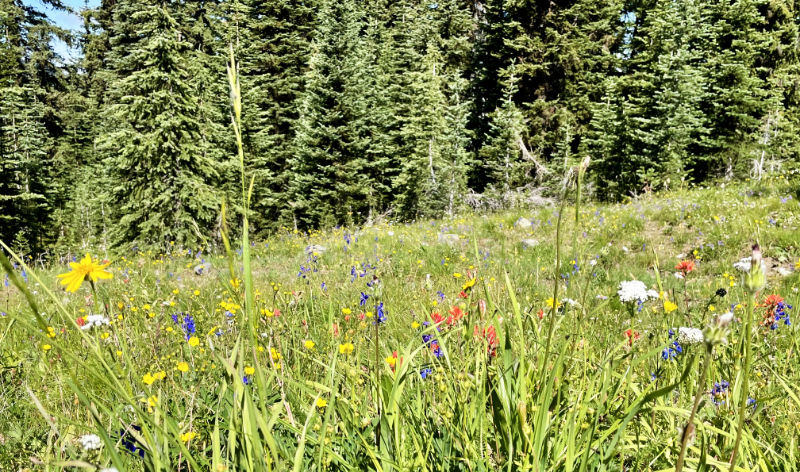
Despite drought conditions in the park, the wildflowers were diverse and beautiful and inspired me to consider replicating some of the colour combinations in my own garden.
In the alpine, at 5-6,000 feet, red paintbrush were bright against the background of silvery pussytoes and white star-flowered sandworts. A great combination! Add in the occasional deep blue of lupines or self-heal and bright yellow buttercups it was different again. Western anemone had finished flowering but their mop top seedheads were graceful and fun and reminded me of the Pulsatilla vulgaris or Prairie Crocus from my own garden, which also have seedheads that look like bedheads.
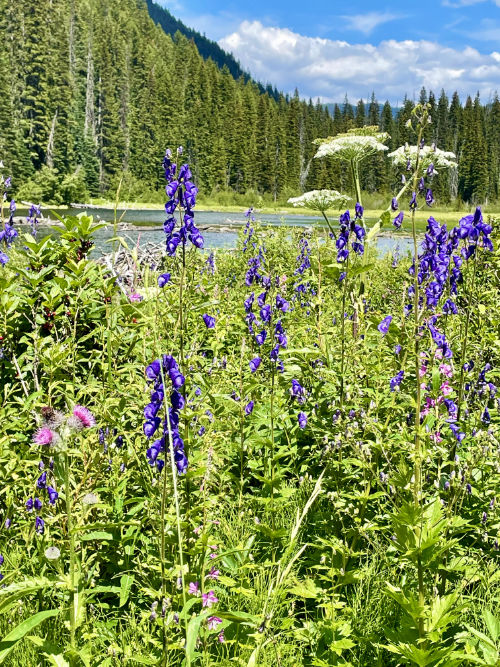
The wildflowers were entirely different on our hike along the chain of lakes at about 4,000 feet: Lightning, Flash, Strike and Thunder. It’s a more-shaded hike, with lots of creeks and seeps, wetlands and streams, so it features plants which require more moisture than we typically find naturally in the Okanagan.
However, we can substitute drought-tolerant, xeriscape plants for some of those dramatic combinations I found on the lakes trail.
For instance, there was one meadow of deep blue Upland Larkspur, nearly as tall as me, along with creamy Cowparsnip, Fireweed and thistles and I thought of alternatives such as the tall hollyhocks, Beebalm, asters and yarrow, with Fallugia paradoxa or Apache Plume. It’s a shrub of about four feet that has fluffy, pinkish seed heads in summer. All of those are tolerant of both heat and dry conditions and make a glorious show of colour and height and texture.

Paintbrush was a feature everywhere you looked, whether short or tall, and in all shades of red, orange and pink or white. However, it’s one wildflower that’s best left in the wild as it is semi-parasitic on the roots of particular grasses and won’t survive on its own.
Never dig up wildflowers in the wild. Instead, look for cousins in nurseries or explore the native plant section.
Hiking around the Okanagan is a wonderful opportunity to bring home inspiration for your own landscapes, as well as a reminder that it is very dry out there.
If we try to garden as if that natural condition did not exist, we’ll use far more water than we can afford to waste on our landscapes. If we want to live in the Okanagan, we must reform our bad habit of growing plants which require lots of water to thrive.

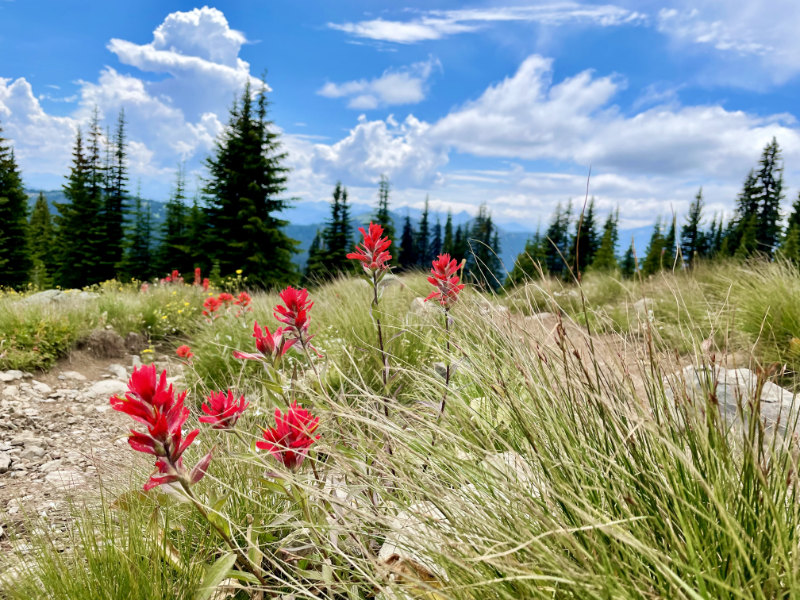
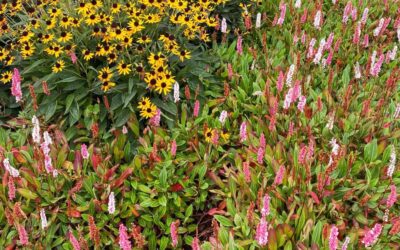
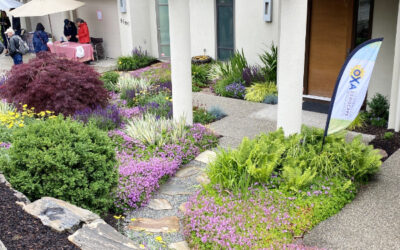
0 Comments